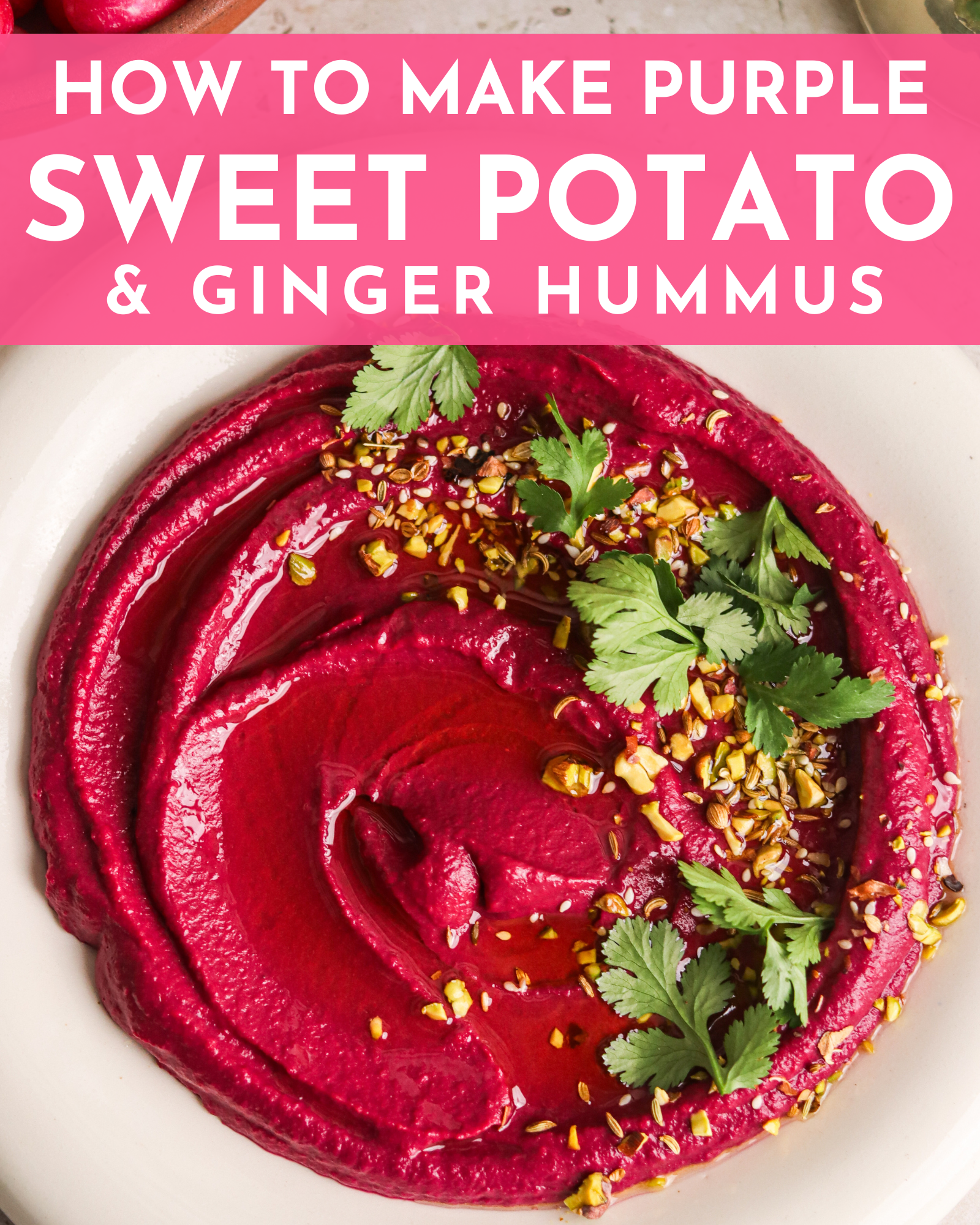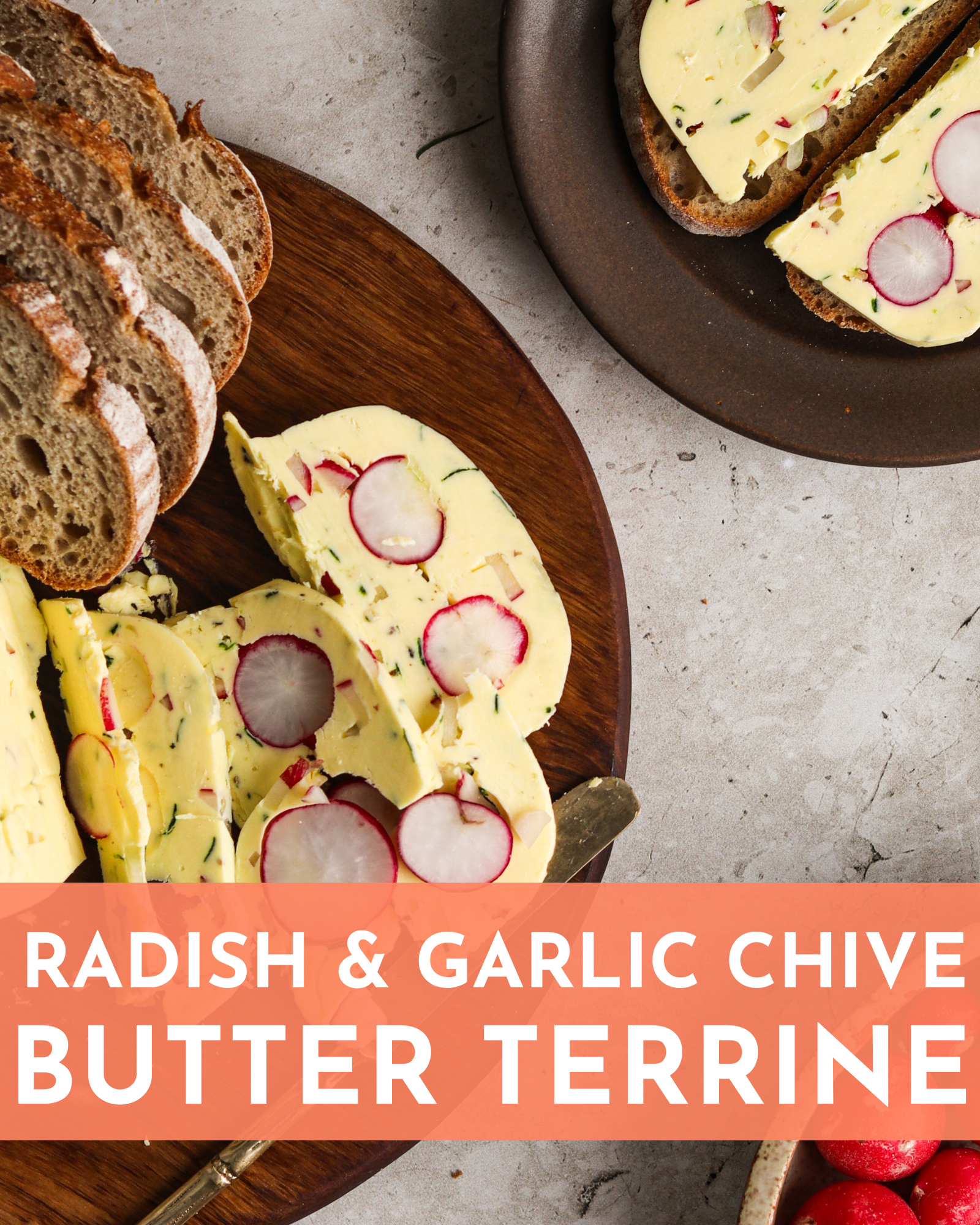This post may contain affiliate links. Please read our
disclosure policy
for more information.
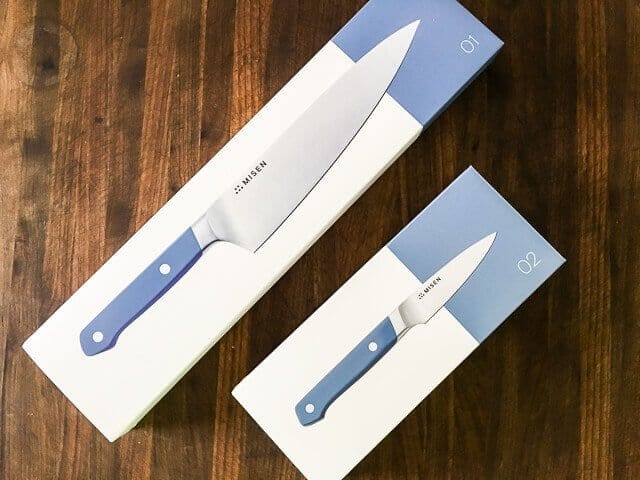
This is a review of the Misen Knife Set, including both PROs and CONs of the knives.
Misen Knife Set Review
We’ve reviewed the Misen Chef’s Knife a few months ago. This time, we’re revisiting the Chef’s Knife, after 7 months of use, as well as their brand new Misen Paring Knife.
In September of 2015, Misen launched a successful Kickstarter campaign, raising over $1 million to bring a high-quality chef’s knife to the marketplace that was affordable, or as they put it, “An amazing knife at an honest price.”
Walk in any Sur La Table or Williams Sonoma, and you’ll see rows of high-end knives behind a glass case, each with a high-end price tag. But what are you really paying for? Much of the price includes the costs of marketing, product placement fees, and wholesaler and retailer markup. Misen’s approach was different. Direct from company to consumer, and creating a $65 chef’s knife and $30 paring knife that rivals their competitors at 2-3x the price.
Since I’ve reviewed the Misen Chef’s Knife, I’ll repeat a few facts and details here.
Misen Knife Material
The Misen is made from Japanese AUS-8 High Carbon Steel, which also includes “vanadium which improves wear resistance and gives good toughness. It also reportedly makes the steel easier to sharpen, ” according to BladeHQ website (fascinating facts on all types of materials used for knives)
I’m not an expert on steel, but from all the research I’ve done the past week, it seems that AUS-8 is good…but certainly not the best. It’s a good balance between durability, ease of sharpening and rust resistance. It’s an average material used in many mid-grade Japanese kitchen knives.
Graphic from Misen:
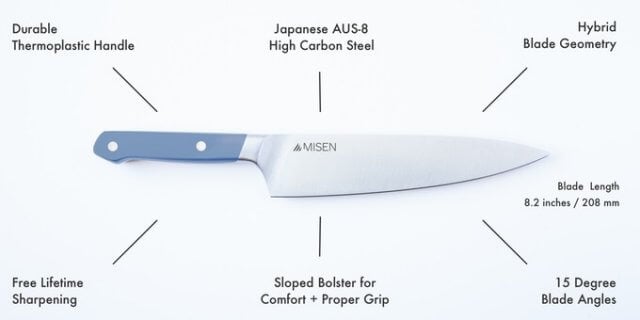
Misen is tempered at 58º-59º Rockwell (higher numbers=harder). The harder the steel, the more durable (holds edge well), but also more brittle. As I mentioned in my Wüsthoff 8-inch Uber Cook’s Knife Review, I own many high end Japanese chef’s knives, which are 60º-61º. The problem with thin, harder steel is that it can shatter or chip when dropped on a tile floor. You’d never want to whack through bones with those knives (ahem, from experience).
It’s a balance. If the steel is too soft, you’d have to sharpen it very often. It would be too dull! Also, harder knives are difficult to sharpen and hone. It usually takes me twice as long to sharpen my Japanese knives.
Misen’s 58º-59º Rockwell is a good sweet spot.
Update on 7 Months of Use
PRO: The Misen Chef’s Knife is still in my knife drawer. It’s the chef’s knife that I reach for when I’m faced with pounds worth of produce to power through. That’s because it has the most comfortable handle of all my knives.
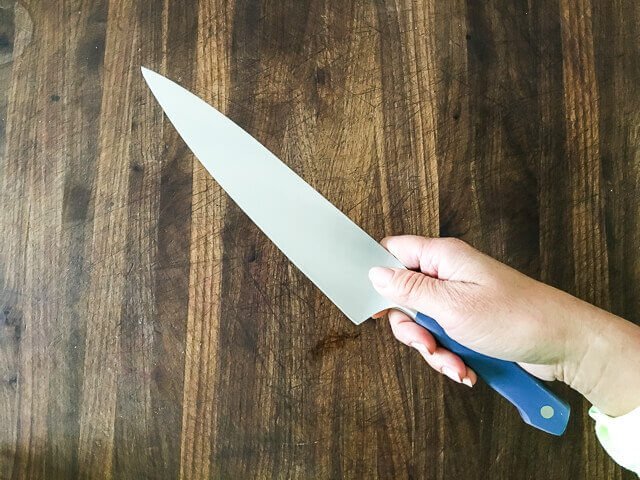
The gently sloped bolster (the part between the handle and the blade) means my thumb and forefinger nestles comfortably, right into position.
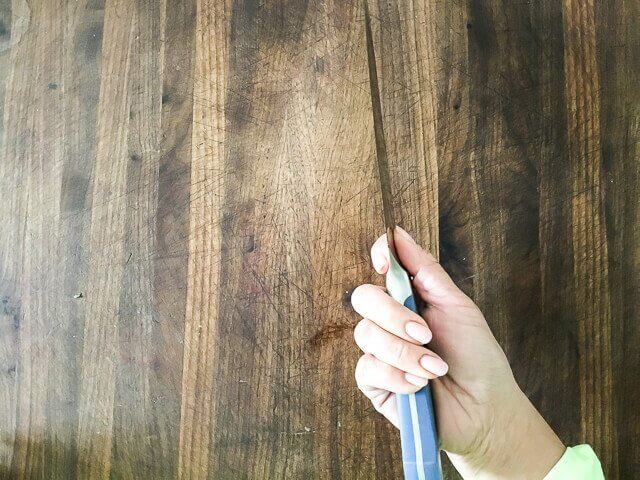
No extra material, no hard edges, no big bumps that would cause blisters after shredding 2 heads of cabbage.
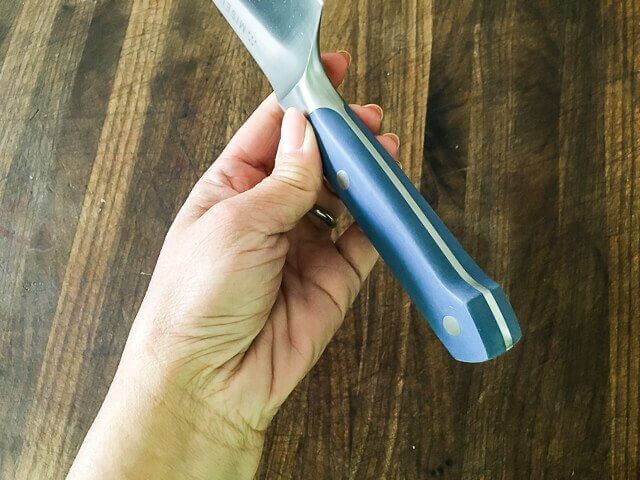
PRO: One thing I didn’t notice before in my first review of the knife, is that the handle is rounder towards the blade, and more angular towards the back. It’s not just a pretty design choice – the rounder handle makes it easier to grip, with less stress on the hand.
CON: The knife doesn’t stay as sharp as my Wüsthof knives, but the Misen blade hones (with a honing stick) rather quickly, just a few swipes back and forth before each use is all that’s needed. I’ve sharpened the knife (with an electric knife sharpener) twice in the past 7 months. If you’re not used to sharpening your own knives, bring them to your butcher, they usually charge a few bucks per blade to sharpen.
Misen Paring Knife
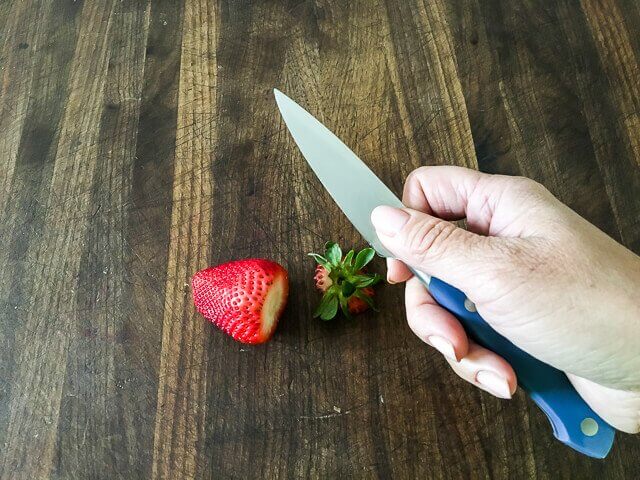
PRO: The new Misen Paring Knife follows similar design and construction, and also with an affordable price tag of just $30. Same Japanese AUS-8 High Carbon Steel and durable handle.
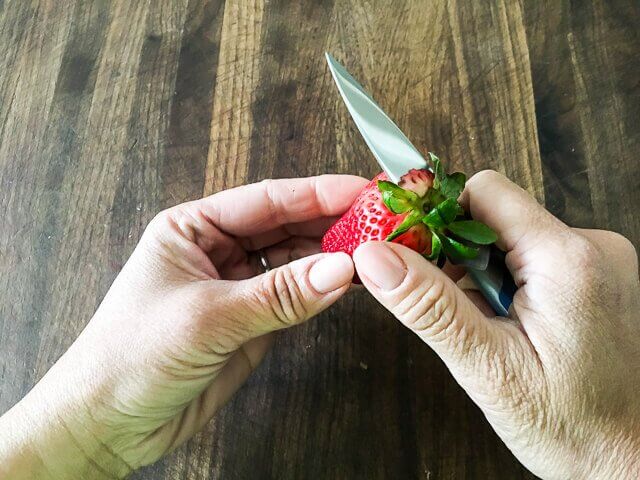
I appreciate the sloped bolster of the paring knife, but my normal hand-hold of a paring knife is different than a chef’s knife. I don’t use a pinch grip. Instead, the pressure point is in the crook of my forefinger, pushing against the back of the blade.
CON: If we are talking purely comfort, I would have loved a flat area for that pressure point.
PRO: The knife is made for both right handed and left handed people.
Price Point
PRO: The big appeal of Misen knives is that their quality knives are absolutely affordable, the set of two knives is $95. Pair these two knives with a long serrated blade (Misen currently doesn’t have a serrated knife) for bread and tomatoes, and that’s all you really need in your drawer.
One of my friends is getting married, and asked which knife set she should add to her registry. She sent over links to two sets that she had chosen, one of them with 7 different knives, shears and a wood block. I told her:
- Don’t use a wood block. It gets dirty, nasty and you can’t clean inside the slots. Plus, your knife dulls every time it makes contact with the wood.
- You’ll use maybe 3 of those knives.
- The kitchen shear handles look way too small and uncomfortable.
I advised her that it’s better to have 2-4 knives that you really, truly love. Find kitchen shears with a big, comfy, rounded handles – you’ll appreciate them when spatchcocking a chicken. Instead of a knife block, magnets work well to hold and store knives. She added the Misen set and an electric knife sharpener to her registry instead.
You can purchase the knives only from Misen website.
Misen Knife Set Giveaway
One of each: Misen Chef’s Knife and Misen Paring Knife.
This post may contain affiliate links. Please read our
disclosure policy
for more information.
This post may contain affiliate links. Please read our
disclosure policy
for more information.

This is a review of the Misen Knife Set, including both PROs and CONs of the knives.
Misen Knife Set Review
We’ve reviewed the Misen Chef’s Knife a few months ago. This time, we’re revisiting the Chef’s Knife, after 7 months of use, as well as their brand new Misen Paring Knife.
In September of 2015, Misen launched a successful Kickstarter campaign, raising over $1 million to bring a high-quality chef’s knife to the marketplace that was affordable, or as they put it, “An amazing knife at an honest price.”
Walk in any Sur La Table or Williams Sonoma, and you’ll see rows of high-end knives behind a glass case, each with a high-end price tag. But what are you really paying for? Much of the price includes the costs of marketing, product placement fees, and wholesaler and retailer markup. Misen’s approach was different. Direct from company to consumer, and creating a $65 chef’s knife and $30 paring knife that rivals their competitors at 2-3x the price.
Since I’ve reviewed the Misen Chef’s Knife, I’ll repeat a few facts and details here.
Misen Knife Material
The Misen is made from Japanese AUS-8 High Carbon Steel, which also includes “vanadium which improves wear resistance and gives good toughness. It also reportedly makes the steel easier to sharpen, ” according to BladeHQ website (fascinating facts on all types of materials used for knives)
I’m not an expert on steel, but from all the research I’ve done the past week, it seems that AUS-8 is good…but certainly not the best. It’s a good balance between durability, ease of sharpening and rust resistance. It’s an average material used in many mid-grade Japanese kitchen knives.
Graphic from Misen:

Misen is tempered at 58º-59º Rockwell (higher numbers=harder). The harder the steel, the more durable (holds edge well), but also more brittle. As I mentioned in my Wüsthoff 8-inch Uber Cook’s Knife Review, I own many high end Japanese chef’s knives, which are 60º-61º. The problem with thin, harder steel is that it can shatter or chip when dropped on a tile floor. You’d never want to whack through bones with those knives (ahem, from experience).
It’s a balance. If the steel is too soft, you’d have to sharpen it very often. It would be too dull! Also, harder knives are difficult to sharpen and hone. It usually takes me twice as long to sharpen my Japanese knives.
Misen’s 58º-59º Rockwell is a good sweet spot.
Update on 7 Months of Use
PRO: The Misen Chef’s Knife is still in my knife drawer. It’s the chef’s knife that I reach for when I’m faced with pounds worth of produce to power through. That’s because it has the most comfortable handle of all my knives.

The gently sloped bolster (the part between the handle and the blade) means my thumb and forefinger nestles comfortably, right into position.

No extra material, no hard edges, no big bumps that would cause blisters after shredding 2 heads of cabbage.

PRO: One thing I didn’t notice before in my first review of the knife, is that the handle is rounder towards the blade, and more angular towards the back. It’s not just a pretty design choice – the rounder handle makes it easier to grip, with less stress on the hand.
CON: The knife doesn’t stay as sharp as my Wüsthof knives, but the Misen blade hones (with a honing stick) rather quickly, just a few swipes back and forth before each use is all that’s needed. I’ve sharpened the knife (with an electric knife sharpener) twice in the past 7 months. If you’re not used to sharpening your own knives, bring them to your butcher, they usually charge a few bucks per blade to sharpen.
Misen Paring Knife

PRO: The new Misen Paring Knife follows similar design and construction, and also with an affordable price tag of just $30. Same Japanese AUS-8 High Carbon Steel and durable handle.

I appreciate the sloped bolster of the paring knife, but my normal hand-hold of a paring knife is different than a chef’s knife. I don’t use a pinch grip. Instead, the pressure point is in the crook of my forefinger, pushing against the back of the blade.
CON: If we are talking purely comfort, I would have loved a flat area for that pressure point.
PRO: The knife is made for both right handed and left handed people.
Price Point
PRO: The big appeal of Misen knives is that their quality knives are absolutely affordable, the set of two knives is $95. Pair these two knives with a long serrated blade (Misen currently doesn’t have a serrated knife) for bread and tomatoes, and that’s all you really need in your drawer.
One of my friends is getting married, and asked which knife set she should add to her registry. She sent over links to two sets that she had chosen, one of them with 7 different knives, shears and a wood block. I told her:
- Don’t use a wood block. It gets dirty, nasty and you can’t clean inside the slots. Plus, your knife dulls every time it makes contact with the wood.
- You’ll use maybe 3 of those knives.
- The kitchen shear handles look way too small and uncomfortable.
I advised her that it’s better to have 2-4 knives that you really, truly love. Find kitchen shears with a big, comfy, rounded handles – you’ll appreciate them when spatchcocking a chicken. Instead of a knife block, magnets work well to hold and store knives. She added the Misen set and an electric knife sharpener to her registry instead.
You can purchase the knives only from Misen website.
Misen Knife Set Giveaway
One of each: Misen Chef’s Knife and Misen Paring Knife.
This post may contain affiliate links. Please read our
disclosure policy
for more information.










